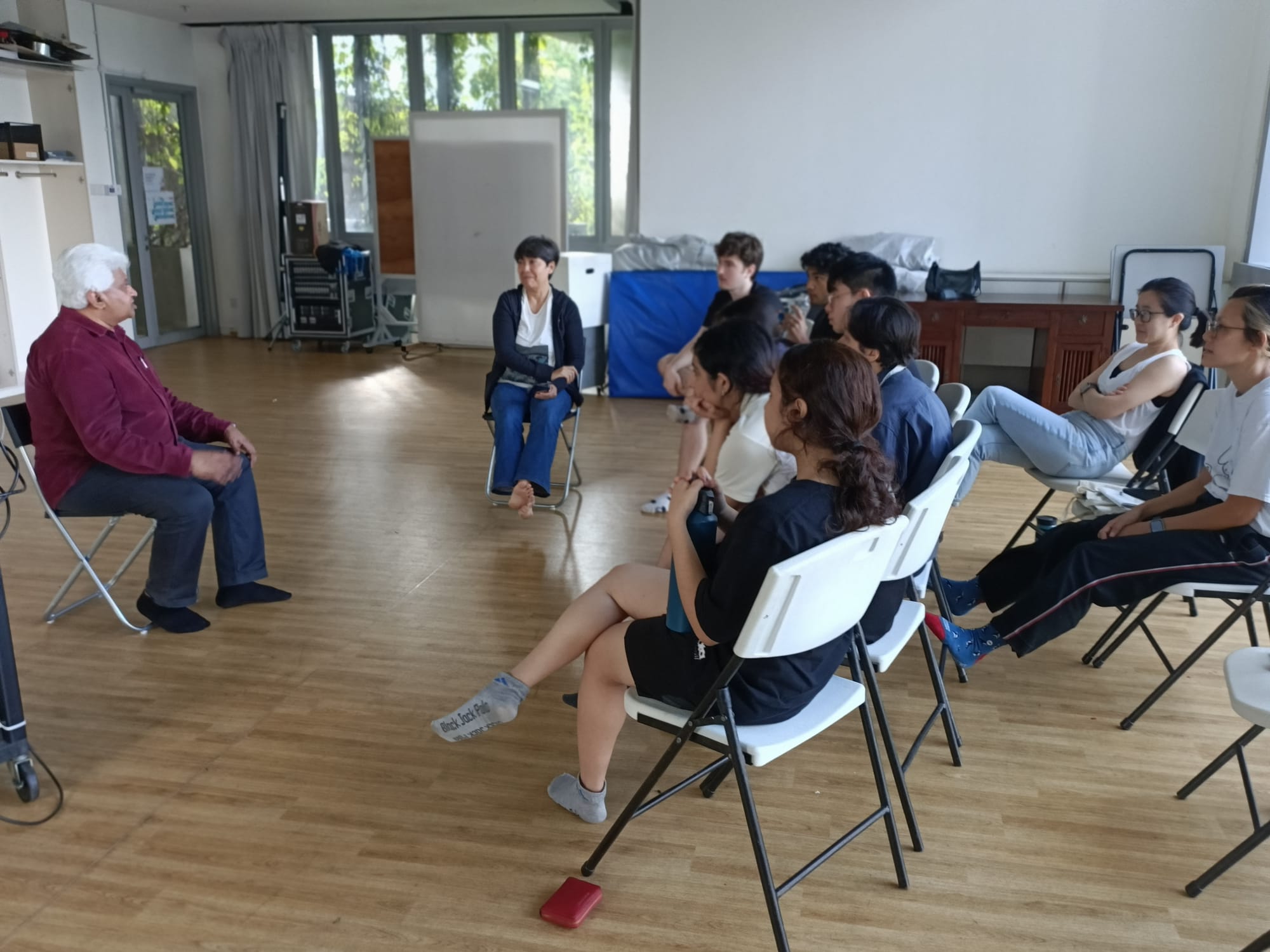
On 10 Mar, ITI Director T. Sasitharan (Sasi) addressed the young theatre students of School of the Arts Singapore (SOTA), invited by ITI alumni and current Faculty of Theatre at SOTA, Zachary Ho.
Sasi’s talk gave a brief overview of the history of English-language theatre in Singapore, referencing theatre and ritual-based practices in Southeast Asia pre-dating the arrival of the British; the development of early English-text plays written by Singaporean playwrights; and the emergence of critical works by the late Kuo Pao Kun which questioned the use of language in forming - and erasing - communities. Throughout his lecture, Sasi highlighted the role of memory, language, and theatre in shaping counter-narratives to written history.
“To fall back on memory is a kind of history. It's useful. It's not always reliable - as we know, we tend to forget things very easily - but it's useful because sometimes the histories that we can pull together through memories will serve as a counterpoint to the master narrative that we are taught.” (T. Sasitharan)
In the master narrative of English-language theatre in Singapore, Sasi described an evolution of language itself: from the assertion of The Queen’s English (received pronunciation) as the standard on stage, to the gradual recognition, acceptance and adoption of Singlish and its various influences into the theatre. Sasi described this process by the early playwrights and actors to the present day, as a process of translation: translating the spoken language or common tongue into text and onto stage, through listening, asking questions, and practising patience in an effort to truly understand.
Sasi also positioned the history of Singapore theatre alongside the history of ITI, saying “Intercultural Theatre Institute is a child of the history of theatre in Singapore. It would not have existed, if not for a particular narrative of the history of theatre in Singapore.”
ITI’s assertion of a multicultural approach to theatre training, bringing together teachers and students from different countries and cultures for a 3-year training program in contemporary and traditional arts, was created in response to the need for alternative approaches to theatre education in Singapore.
Lastly, Sasi put forward a question for the young students to consider: “do we have directors, writers and actors who are prepared to play with language as it is spoken – in other words, are we prepared to allow a flexibility of the tongue when it comes to English?” What role will young actors play in the shaping of a counternarrative to contemporary theatre education and performance, today?
Written by Tess Pang